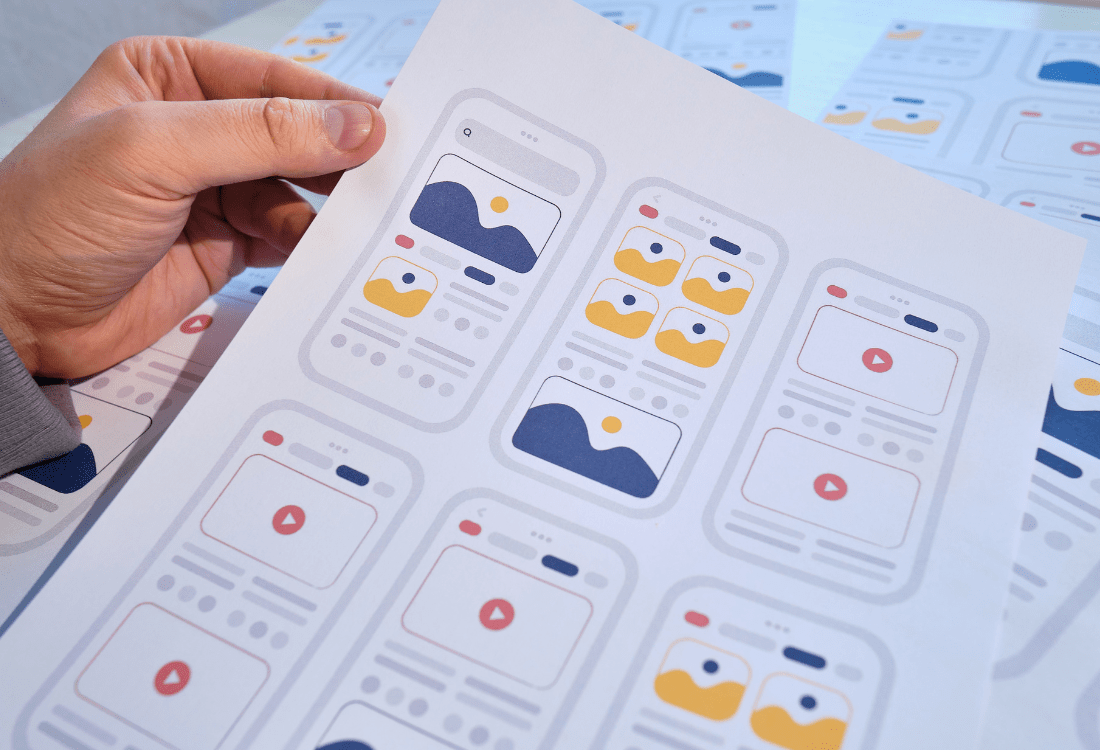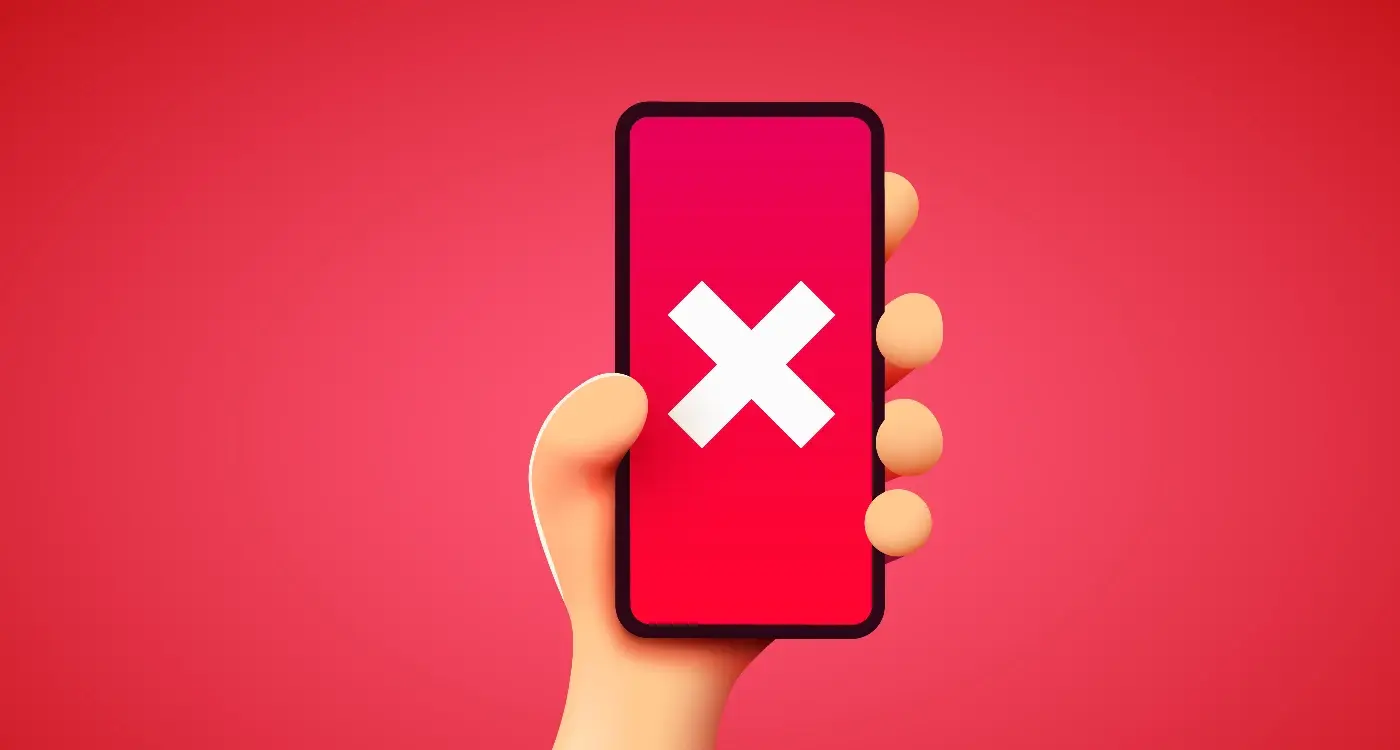What's The Difference Between UI And UX Design?
Most people think UI and UX are the same thing—or at least pretty similar. I get it, the terms get thrown around interchangeably all the time. But here's the thing: they're actually quite different, and understanding this difference can make or break your mobile app project. After working with hundreds of clients over the years, I've seen perfectly good app ideas fail because teams didn't grasp what each discipline actually does.
Think about the last time you used a mobile app that just felt right. Everything was where you expected it to be, it looked great, and using it was almost effortless. That magical experience didn't happen by accident—it was the result of both UI and UX design working together brilliantly. But here's where it gets interesting: these two disciplines approach the same goal from completely different angles.
Good design is invisible. When you have it, you don't notice it. When you don't, you can't ignore it.
The mobile app industry has matured massively over the past decade. Users now expect apps to not only look beautiful but also solve real problems in intuitive ways. Understanding the design distinction between UI and UX isn't just helpful—it's what separates successful apps from the millions that get deleted after one use. Interface design might catch someone's eye, but it's the underlying experience that keeps them coming back.
What Is UI Design?
UI design stands for User Interface design—and before you roll your eyes at another tech acronym, let me explain what this actually means in plain English. UI design is all about creating the visual parts of an app that people touch, tap, and interact with. Think buttons, menus, icons, colours, and text. If you can see it on your phone screen and interact with it, that's UI design at work.
When I'm working with clients on their mobile apps, I spend a lot of time explaining that UI design isn't just about making things look pretty (though that's part of it). It's about creating an interface that people can actually use without getting frustrated. The button needs to look like a button; the menu needs to be easy to find; the text needs to be readable. Sounds obvious, right? You'd be surprised how many apps get this wrong.
The Building Blocks of UI Design
UI designers work with visual elements like typography, colour schemes, spacing, and layout. They decide how big that "Buy Now" button should be, what colour it should be, and where it should sit on the screen. They choose fonts that are easy to read and create consistent visual patterns throughout the app.
The goal is simple: make sure people can navigate your app without confusion. Good UI design feels invisible—you don't notice it because everything just works as expected.
What Is UX Design?
UX stands for User Experience, and it's all about how people feel when they use your mobile app. Think of it this way—when someone opens your app, can they easily find what they're looking for? Do they feel happy or frustrated? That's UX design in action. It's not about making things look pretty (that's UI design, which we covered earlier); it's about making sure your app actually works well for real people.
I've watched countless apps fail because the developers focused on flashy features but forgot to ask one simple question: is this actually easy to use? UX designers spend their time researching how people behave, what they need, and what problems they're trying to solve. They create wireframes—basic sketches that show where everything goes on each screen. They test ideas with real users before any code gets written.
What UX Designers Actually Do
- Research how people use mobile apps
- Create user journeys that map out each step
- Design wireframes and prototypes
- Test ideas with real users
- Analyse data to improve the experience
The best UX design is invisible. When someone can complete their task without thinking about it, without getting confused, without wanting to throw their phone across the room—that's when you know the UX designer has done their job properly.
Start with user research before designing anything. Spend time understanding your target audience's needs, frustrations, and goals. This foundation will guide every design decision you make.
Key Differences Between UI and UX
Right, let's get straight to the point—UI and UX are different beasts entirely. I know we've covered what each one does, but now we need to look at how they actually differ in practice. Think of UI as the surface layer that people see and touch; UX is everything that happens underneath to make that interaction feel right.
UI designers spend their time choosing colours, picking fonts, and deciding where buttons should go. They're the ones making sure your app looks polished and professional. UX designers? They're busy figuring out why someone would tap that button in the first place and what should happen next. They map out user journeys, test different flows, and make sure the whole experience makes sense.
Timing and Focus
Here's something that catches people out—UX work happens first, then UI follows. You can't design a beautiful interface until you know what that interface needs to do. UX designers create wireframes and prototypes that show how everything should work; UI designers then make those wireframes look amazing and feel intuitive to use.
The tools are different too. UX designers use research methods, user testing, and analytics. UI designers work with design software, colour theory, and visual hierarchy. Both are needed to create apps that people actually want to use.
How UI and UX Work Together
Here's the thing about UI and UX in mobile app development—they're not competing against each other. They're working as a team. Think of it like this: UX design figures out what the app should do and how users will move through it, while UI design makes it look good and feel right to touch. One can't really exist without the other.
When I'm working on a mobile app project, the UX designer usually starts first. They'll map out user journeys, create wireframes, and test different ways people might use the app. Once we know how the app should work, the UI designer steps in to make it beautiful and engaging. But here's where it gets interesting—they constantly talk to each other throughout the process.
The Back-and-Forth Process
Sometimes the UI designer will spot a problem with the interface design that the UX designer missed. Maybe a button is too small for thumbs, or the colour scheme makes text hard to read. The UX designer might then suggest changes to improve the user flow.
The best mobile apps happen when UI and UX designers work together from day one, not in separate rooms
This design distinction matters because both disciplines need each other to create apps that people actually want to use. Great UX with poor UI feels clunky; stunning UI with bad UX looks pretty but frustrates users. When they work together properly, you get mobile apps that are both gorgeous and genuinely useful.
Common Misconceptions About UI and UX
After working with countless clients over the years, I've noticed the same myths about UI and UX design keep popping up. Let me set the record straight on some of the biggest misconceptions I hear.
They're the Same Thing
This is probably the most common mistake I encounter. People think UI and UX are interchangeable terms—they're not. UI design focuses on how things look and feel when you touch them; UX design is about the entire journey someone takes when using your app. Think of it this way: UI is the buttons and colours, UX is whether people can actually accomplish what they came to do.
Good UI Automatically Means Good UX
I've seen plenty of beautiful apps that are absolute nightmares to use. Just because something looks stunning doesn't mean it works well. You could have the most gorgeous interface in the world, but if users can't figure out how to complete basic tasks, your UX is rubbish.
Here are the misconceptions I hear most often:
- UX design is just about making things pretty
- You only need one designer for both UI and UX
- UX testing isn't necessary if the design looks good
- UI design is more important than UX design
- UX design is just common sense
The truth is both UI and UX require different skills, different thinking, and different approaches. They work together, but they're definitely not the same thing.
The Design Process for Mobile Apps
Building a mobile app isn't like putting together a jigsaw puzzle—there's no picture on the box to guide you! Over the years, I've watched countless teams jump straight into designing screens without any real plan, and trust me, it never ends well. The mobile app design process brings together both UI and UX work in a structured way that makes sense.
The process typically starts with research and discovery, where UX designers figure out what users actually need. Then comes wireframing and prototyping—this is where the interface design really starts to take shape. UI designers jump in during the visual design phase, creating the colours, typography, and pixel-perfect screens that users will interact with.
The Complete Design Workflow
- User research and problem definition
- Information architecture and user flows
- Wireframing and low-fidelity prototypes
- Visual design and brand application
- High-fidelity prototypes and interactions
- Testing and iteration
- Development handoff and quality assurance
What's interesting is how UI and UX designers work together throughout this process. They're not working in isolation—the UX person hands over wireframes, the UI designer makes them beautiful, then they both test the results with real users. It's this back-and-forth collaboration that creates successful mobile apps.
Always test your designs with real users before development begins. I've seen too many beautiful apps fail because nobody checked if people could actually use them!
Conclusion
After working with countless clients over the years, I can tell you that understanding the difference between UI and UX design isn't just academic—it's what separates successful apps from the ones that get deleted after five minutes. UI design focuses on how your app looks and feels when someone touches it; UX design is about making sure the whole experience makes sense and solves real problems.
The magic happens when these two work together seamlessly. Your app might have the most beautiful interface in the world, but if users can't figure out how to complete basic tasks, they'll move on to something else. Equally, brilliant user experience planning means nothing if people can't actually use your buttons or read your text.
Both designers need to collaborate from day one—not as an afterthought. I've seen too many projects fail because teams treated UI and UX as separate jobs that could be done independently. They're different skills, yes, but they're solving the same puzzle: how do we make this app work brilliantly for real people?
Whether you're building your first app or your fiftieth, keeping both UI and UX at the heart of your design process will save you time, money, and countless headaches down the line.
Share this
Subscribe To Our Learning Centre
You May Also Like
These Related Guides

What is Mobile App UX Design?

What Is Mobile App UI Design?



